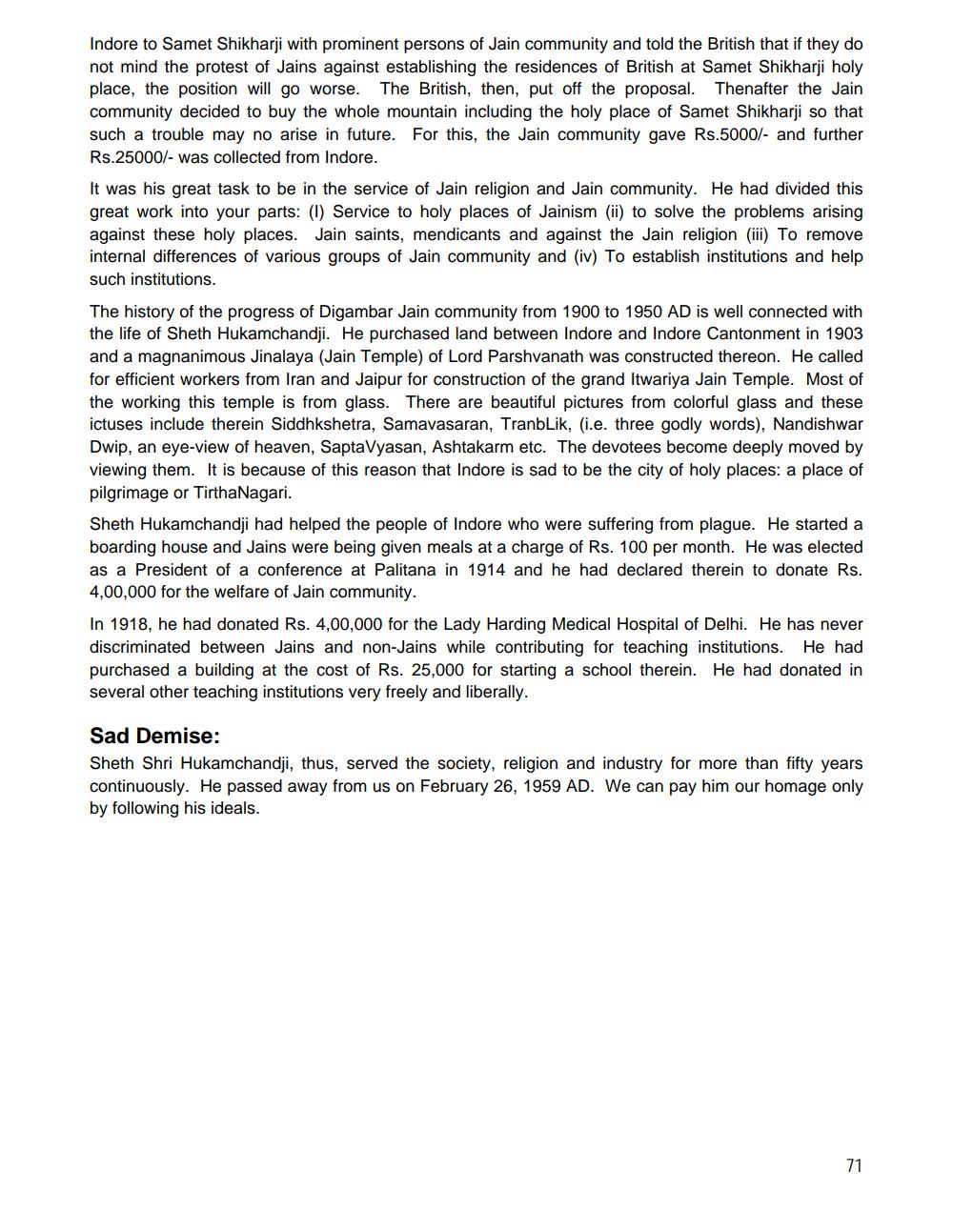________________
Indore to Samet Shikharji with prominent persons of Jain community and told the British that if they do not mind the protest of Jains against establishing the residences of British at Samet Shikharji holy place, the position will go worse. The British, then, put off the proposal. Thenafter the Jain community decided to buy the whole mountain including the holy place of Samet Shikharji so that such a trouble may no arise in future. For this, the Jain community gave Rs.5000/- and further Rs.25000/- was collected from Indore.
It was his great task to be in the service of Jain religion and Jain community. He had divided this great work into your parts: (1) Service to holy places of Jainism (ii) to solve the problems arising against these holy places. Jain saints, mendicants and against the Jain religion (iii) To remove internal differences of various groups of Jain community and (iv) To establish institutions and help such institutions.
The history of the progress of Digambar Jain community from 1900 to 1950 AD is well connected with the life of Sheth Hukamchandji. He purchased land between Indore and Indore Cantonment in 1903 and a magnanimous Jinalaya (Jain Temple) of Lord Parshvanath was constructed thereon. He called for efficient workers from Iran and Jaipur for construction of the grand Itwariya Jain Temple. Most of the working this temple is from glass. There are beautiful pictures from colorful glass and these ictuses include therein Siddhkshetra, Samavasaran, TranbLik, (i.e. three godly words), Nandishwar Dwip, an eye-view of heaven, SaptaVyasan, Ashtakarm etc. The devotees become deeply moved by viewing them. It is because of this reason that Indore is sad to be the city of holy places: a place of pilgrimage or TirthaNagari.
Sheth Hukamchandji had helped the people of Indore who were suffering from plague. He started a boarding house and Jains were being given meals at a charge of Rs. 100 per month. He was elected as a President of a conference at Palitana in 1914 and he had declared therein to donate Rs. 4,00,000 for the welfare of Jain community.
In 1918, he had donated Rs. 4,00,000 for the Lady Harding Medical Hospital of Delhi. He has never discriminated between Jains and non-Jains while contributing for teaching institutions. He had purchased a building at the cost of Rs. 25,000 for starting a school therein. He had donated in several other teaching institutions very freely and liberally.
Sad Demise:
Sheth Shri Hukamchandji, thus, served the society, religion and industry for more than fifty years continuously. He passed away from us on February 26, 1959 AD. We can pay him our homage only by following his ideals.
71




